Blog
Monthly Archive: 2012
On Poetry, the body, and the earth
Posted on Monday, December 10, 2012
 |  |  |
As work on The Firework Maker's Daughter developed, so too did my sense of artistic kinship with my librettist Glyn Maxwell. A sense of the considerable overlap in our aesthetic outlook has only been heightened by my reading of his new book On Poetry where Glyn talks incredibly engagingly about how poetry works.
The book in many ways was one of the best composition lessons I've ever had, and I may talk about more of it in a subsequent post, but the aspect I'd like to discuss here is that of the relation of the art to the act of 'being human'. For a poem to be successful, Glyn argues that it must coherently express a human presence. He's talking about something very different from the poet 'expressing his emotions', it's more to do with the way the work of art manages to conjur that palpable sense of someone being there. There are all sorts of ways this can be achieved of course - a person might be there, but in hiding; or trying to draw attention away from themselves; and of course people can have contradictory traits, but still have a coherent presence.
The heartbeat, the breath, the laugh, the cry, the step, the spoken word; these are all some of the essential starting points of music, and I do believe much of music's mysterious power can be traced to its origins in these elemental aspects of being human; just as Glyn argues that dealing with them in a poem are a crucial part of creating that sense of a coherent human presence.
I'm not sure Glyn's view of poetry translates directly to music, but I certainly think the connection between music and the physical body is very important, and one very much to the forefront of my mind when I write. Many of the 'traditional' uses of music - the lament, the celebration, the dance, the work-song - stem from physicality, and I feel sure, to adapt John Adams's phrase, that music that strays too far from that physicality is likely to atrophy.
For me, there is one other aspect which is equally important, and that is the relation to the physical world, to the earth. Where most popular music will deal exclusively with the physical - with the body - the most interesting music to me, the work whose scale and ambition I strive to match, are in touch with the connection to both the body and the earth. A Beethoven symphony does this, it is shot through with the dance, but it also looks to the horizon and roots the dance in a landscape. So too does Sibelius, perhaps his music is more connected to the body via the cry than the dance, but his human presence is inescapably connected to a windy Nordic landscape.
So although many of my rhythmic preoccupations are rooted in the physicality of popular music, I try to look beyond that for this connection with the earth. In the opening scene of Act 2 of The Firework Maker's Daughter, Lila the heroine is facing the full-force of mother nature as she attempts to reach the heart of the 'Mountain of fire'. I realise, looking at it now, that the music contains both the heart-beat of the heroine, as well as the awesome terrifying thunder of twisting lava. Physical and elemental combine. Indeed, now I think about it, perhaps one of the main ways we connect to the earth is through a sense of awe - the lone figure contrasting with the might of nature.
To people who say that classical music is irrelevant to the modern world, that pop music is the new classical music, I say, perhaps you have forgotten your connection to the earth. Think no further than the ubiquitous role of amplification in pop music - even so-called 'unplugged' sessions. It's less a side-effect than a deliberate intention of amplification to hermitically seal the listener off from their connection to the earth. A modern, man-made bubble, every bit as counter-natural as the air-conditioning and double-glazing. (This dislike of amplification by the way, was part of the twisted logic behind my Steampunk piece).
Now I can see that what I am striving to achieve is to give the listener the sense of themselves and of the players sitting naked on this beautiful rock we call home, to unmask the reality that lies underneath the layers of clothing, the comfortable seats and the insulated building. Because music deals with these fundamentals, it's pre-historic, it's pre-language, it speaks to that part of us which we spend most of our days avoiding - the part Glyn describes as "ourselves before language, hiding or hunting on that lonely bright savannah".
Have all the good melodies already been used up?
Posted on Sunday, October 21, 2012
For some reason I feel the urge today to answer this perennial question: Have all the good melodies already been used up? To answer it I will have to delve into a little very light mathematics and also reveal a potentially billion-dollar idea I've had for many years.
Start by comparing a melody to the moves in a game of chess. One of the reasons chess is so popular is that after only a very few moves, the possibilities of what could have happened have become so vast that they allow for a near infinite amount of combinations.
Let's take the most basic aspect of a melody - whether each note goes up, down, or stays the same compared with its predecessor. Comparing this one aspect after just twelve notes you've already reached over half a million possibilities. This was the thinking behind a great book I discovered in my school library many years ago, the Dictionary of Musical Themes

This book lists over 10,000 popular melodies using a code U for up D for down and S for stays the same. All you need to do is think of this melody contour for your piece (eg *SUSUSDDSDSDSD for Twinkle Twinkle Little Star) and the chances are you will find it in the book.
Now the reality of melodies is you actually have 12 possible notes (more if you count octaves of course though I can't think off hand of a famous melody than includes a span greater than an octave - please post in the comments if you think of one). With 12 options, it only takes 6 notes to get to 2,985,984 possibilites.
But we've forgotten something - rhythm. It's hard to quantify exactly how many different rhythms you could have for each note of your melody. Even if we stick to 'rational' rhythms it's a bare minimum of 16 (anything from a semiquaver through to a semibreve). If we just stick to that we have 16*12 possibilities for one note. That means just three little notes have a staggering 7,077,888 possibilities. And a 6 note melody (which is still pretty short) could have 50,096,498,540,544 possibilities!
But that's not even the end of it. Not counting all the other rhythmic possibilities we could add, of which simple triplets would be by far the most common; not counting all the ways notes can be ornamented or embellished - of which there are countless; we haven't even thought about harmony. And harmony is one of the great hidden secrets of melody. Many of your favourite tunes will be your favourite not just because of the notes themselves, but because of the way the harmony moves beneath them, giving some notes a satisfying 'soft-landing' or a deliciously unexpected sense of arrival. You only have to think of the famous One Note Samba to realise how important harmony is to melody.
So lets ultra-conservately add 8 more harmony options per note which gives us 1536 options per note. Our 6 note melody now yields 13,132,496,513,412,366,336 options. Which is probably enough to make even most chess players slightly daunted.
Now to that billion-pound idea.
If we go back the Dictionary of Musical Themes, I realised that if you were to add in a similar component for the rhythmic contour of a melody - three options, shorter, longer or stays the same, you could combine this with the Up-Down-Same pitch contour to come up with a 'code' for each melody where each note would be one of 3x3=9 options. We would start by encoding every melody into a string of characters (they could just be numbers 1-9) based on this. Then all you need is the technology to recognise whether someone is whistling/singing a note longer or shorter, higher or lower accurately, and within only a very few notes you could accurately know which song they meant. If you could create an iphone app that did this well I promise you you wouldn't be that far off the billion pound mark.
Being an entrepreneurial type I did actually try to set something like this up a few years ago, in a website I called tunespotting.org There are three very difficult problems to overcome. One is to accurately convert all the melodies in the world into this code. The second is to accurately convert someone's tone-deaf and inaccurate hum/whistle into the correct contour. And the third is to match the two resulting 'strings'. Given that there are some amazing 'loose-match' string searching programs out there, the third of these already exists; and also given things like the amazing Melodyne program which does a pretty good job of separating out indivual notes from an audio file, I really believe the technology already exists to make this a reality and for somebody to make a lot of money from it. It would take a lot of time and effort to get it working smoothly however, and, much to my dad's chagrin, I seem to prefer spending my time exploring just some of those 13,132,496,513,412,366,336 possibilties.
Foot in the door
Posted on Friday, October 12, 2012
It's nice when pieces start to take on a life of their own. I recently received an email from a member of Hartt Music School's Foot in the Door ensemble, saying he'd enjoyed Steampunk at a recent performance by Hudson Valley Chamber Winds and was even happier that his own group had decided to program the piece in their concert this October 17th. I hadn't even heard about the Hudson Valley performance, so this was a double delight. Having repeat performances through word of mouth alone is such a thrill and an honour - you know the performance is happening for no other reason than because the group wants it to happen! Have a great concert guys!
Update
It turns out the Atlantic Chamber Ensemble are also giving another performance of Steampunk this Saturday 20th in Richmond VA. Always a group to add a splash of fun and colour to a concert, the election-themed concert is billed as 'Bruce vs Beethoven' and the audience gets to vote! I'm not sure I fancy my chances there!
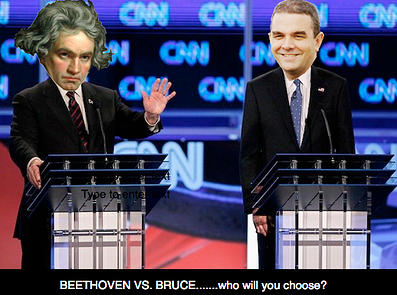
ACE are also performing Gumboots next year in collaboration with Amaranth Contemporary Dance which is the first time this dance-inspired piece will have been actually accompany dance.
Climbing Mount Merapi
Posted on Tuesday, August 21, 2012

Work on my new opera The Firework Maker's Daughter is - from my side at least - very nearly complete. We will have a short orchestral read-through with musicians from Opera North in October, which is very helpful - but other than that, I will do my best not to spend hours dwelling and sweating over every last detail AGAIN. Work now gets handed over to everyone else - director John Fulljames and designer Dick Bird (who designed The Opera Group's Enchanted Pig among many others) are pulling ideas together and have been working with Steve Tiplady and Sally Todd of Indefinite Articles to dream up the concept for the show - the way of presenting it. There will definitely be some shadows, quite a lot of shadows!
In the new year the singers will begin rehearsing and the tour will start in March. Details of the tour are finally being knocked into place. It's a pretty big one, which includes Watford Palace Theatre and some of Opera North's regular touring venues. From 3-13 April it will come to the Linbury Studio Theatre at the Royal Opera House, Covent Garden; and from 3-12 May it will be in New York at the New Victory Theatre on 42nd street, just round the corner from Time Square. Keep up with the latest tour info on The Opera Group's page here
One of the things I'm most delighted about is that the fact that two of my favourite ensembles will be performing - Chroma in the UK, and Metropolis Ensemble in the US. Working with friends takes a lot of the pressure out of the situation which is good. Because there is a certain pressure in all this. Put it this way - you spend about three years working on something; then, although there have been workshops and there will be rehearsals, the first time you can really begin to judge how successful it's all been is at the dress rehearsal- literally a day or two before the premiere - that's the first time the show finally gets run with all the musicians and all the design in place. And by then of course it will be far too late to do anything about it!
I find I can't help comparing myself to Lila, the heroine of the opera. By which I don't mean to imply that I'm a head-strong young girl with pyrotechnic tendencies. But writing an opera can certainly be compared to the exhausting and near-impossible challenge Lila faces when she sets out to climb Mount Merapi to get her hands on the elusive 'Royal Sulphur', that secret ingredient all true Firework Makers must have. What's so touching in the story is that when Lila finally reaches the summit and meets the dreaded Fire-Fiend he just laughs at her and she leaves empty-handed, feeling the whole journey has been for nothing. This, to be quite frank, is how it often feels being an artist. I've climbed my mountain and faced my Fire-Fiend but for now all I have to show for those three years work is 500 sheets of paper with black dots on them. It's a curiously laughable state of affairs.
New Sounds - Prince Zal and the Simorgh
Posted on Tuesday, June 12, 2012
Here's an extract which the LPO have kindly given me permission to post of my recent piece for narrator and orchestra, Prince Zal and the Simorgh. This is the final four minutes of the piece.
In the story, written and narrated by Sally Pomme Clayton - based on a story from the old Persian epic poem The Shahnameh - King Sam abandons his white-haired son on a deserted mountain. but it turns out the mountain is home to the magical bird, the Simorgh, who looks after the baby Prince Zal and raises him. Sixteen years later, King Sam's life has been lonely and miserable, and he sees the error of his ways. He comes to the mountain to pray for his sons forgiveness, and is astonished to see a white -haired boy jumping across the rocks. Zal tells the King the mountain is his home and he can't leave his mother - but then the Simorgh appears - and that's where we pick up the story:
Boots, Forgotten and International
Posted on Friday, June 8, 2012

The second batch of players enrolled in Carnegie Hall's Academy program, and their performing arm Ensemble ACJW are giving the final performance of their tenure this Sunday at Le Poisson Rouge in NYC, and I'm honoured that they asked me to be part of it. They requested a 2 minute piece, and up to my neck in opera as I am, I was concerned even that would be a struggle. Then I remembered the lost movement of Gumboots which I'd reworked for Todd Palmer for clarinet and piano (it hasn't yet been performed after Todd's pianist fell ill for the premiere). I suggested to the ACJW players that it would make a fun short piece to rework for their entire 20+ players (including two pianos!). The concert also features an enticing mish-mash of pieces by Mahler, Lennon and McCartney, Faure, and Taraf de Haidouks! Please come down and support these great players! More details on the Carnegie Hall website and tickets via L.P.R.
Later in July there are two international performances of Gumboots to look forward to - Spain's foremost contemporary clarinettist José Luis Estellés performs it Granada on 17th June, and on 23rd, Sarah Beaty and colleagues from the newly formed The Declassified (all ex-ACJW players) perform, excitingly in Iceland - how I wish I could attend both these performances.
**
I should also draw attention to the Spitalfields & London premiere of Fire on 23rd June, and earlier that day I shall be honoured to be sharing a Meet the Composer event/talk with Howard Skempton.
Fire in Salisbury
Posted on Sunday, May 27, 2012

My piece Fire was always going to be something of an experiment. Part of the idea was to try to create a non-religious 'spiritual space', a contemplation of fire and our relationship with it. In Choristers' Green next to the great cathedral of Salisbury we posed a ridiculously ambitious question - could we create a non-religious version of that simultaneously awe-inspiring and contemplative atmosphere that visitors to the cathedral take for granted? I think it's part of the English tradition to be wary of overly earnest ambitions, and part of me spent the last few weeks of rehearsals in a quiet terror that the whole thing would be a hideous embarrassment. People praise artists for 'taking risks', but no one actually wants to be there for the failures.
The first full run-through with the Salisbury Community Choir (conducted devotedly by Jeremy Backhouse) and the excellent Horns Aloud a couple of weeks ago was a dispiriting disaster. Having learned the piece in the rehearsal room, it was suddenly rather overwhelming for the choristers to find themselves in a giant circle, struggling to see the two conductors (who themselves were struggling to co-ordinate), not helped by the hideous weather causing the conductors' scores to go flying, and the choristers' umbrellas flailing in all directions. The thought of adding in a rowdy crowd, fire, and darkness...well, the whole thing seemed like it would be just one big mistake. I haven't had such a feeling of dread since my student days!
Such dark days are however often turning points, and it certainly galvanised us all into doing whatever we could to make it work better. A couple of weeks later, with various tweaks to the set up and the score, more concentrated rehearsals, and with somebody very clever organising truly perfect weather conditions, what happened really was a (non-religious) miracle!
Around 9.30pm, a huge expectant crowd gathered, even before the planned post-concert audience emerged from the cathedral. The first unison notes from the horns silenced the crowd and the choir gave it their all (having already spent the entire day rehearsing and recording the piece for a Radio 3 broadcast later in the year). To my delight, the audience did what we hoped they would - they stood focussing their attention on the central mass of flames, while the sound from the encircling choir enveloped them from without. The atmosphere was as silent and contemplative as the Wigmore Hall. Everyone seemed to just get it.
As the piece finished and returned to the quiet unison horn notes, a gust of wind caught the flames and the fire roared and danced as if to say 'look at me'. The timing was so exquisite, I would claim divine approval if that wasn't contrary to the entire non-religious spirit of the piece!
So, it was an eccentric experiment, but I think we pulled it off. I suddenly felt - perhaps for the first time in my life - that I had been a very English composer. What could be more English than choral-eccentric-mysticism performed in the shadow of Salisbury cathedral?!

Setting up

The setting was next to Salisbury Cathedral in Chorister's Green
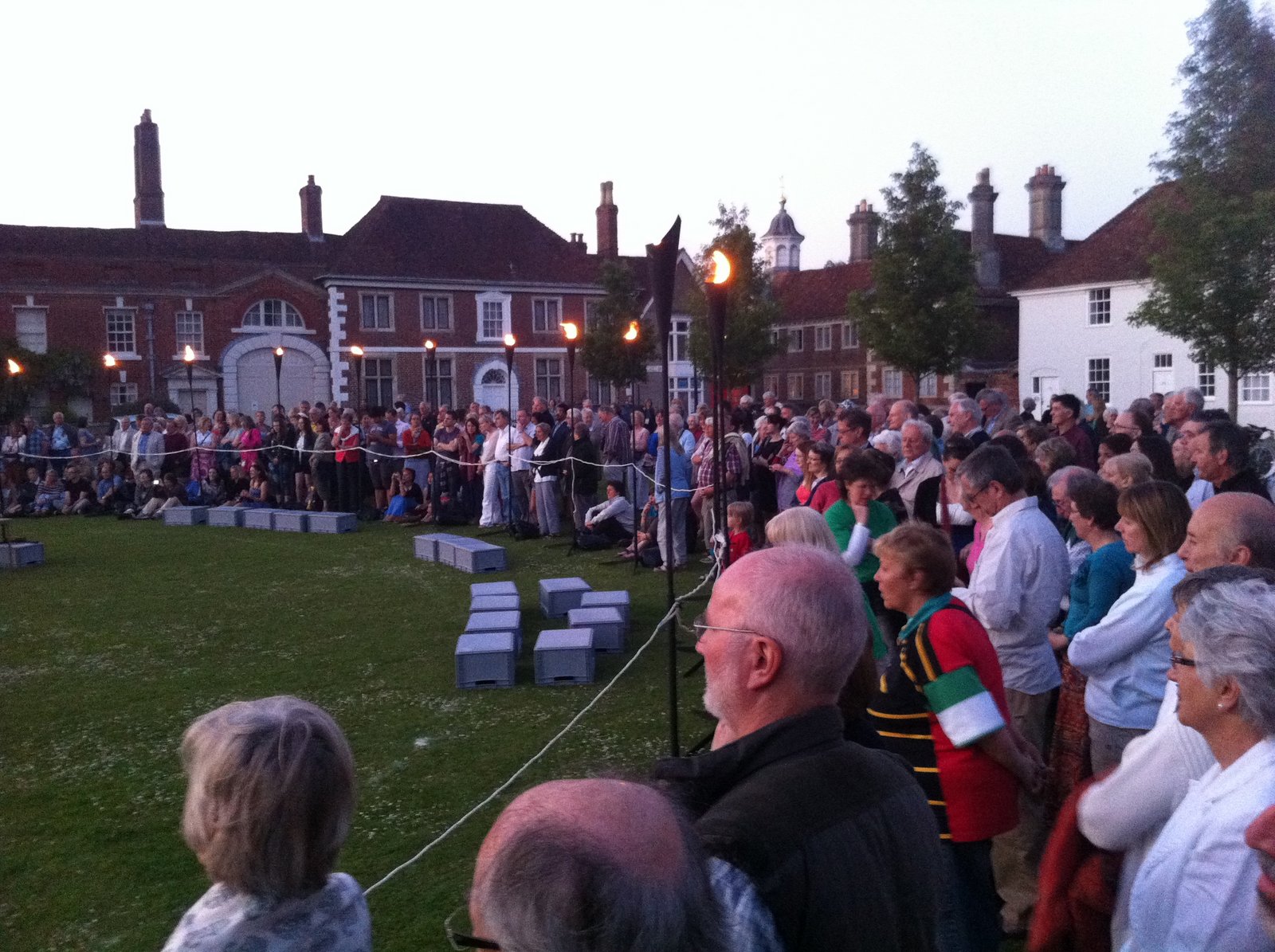
The crowd gathers

Waiting outside the circle as the flames are lit

And the view from within. Huge credit to The World Famous for their beautiful installation.
Improving on silence
Posted on Thursday, May 24, 2012
As composers we're basically suggesting we're capable of creating things that improve upon silence ("Apprentice Silence-improver" is my twitter self-description). That said, silence is not something you expect to find in a room full of 2500 school kids on a sweltering hot day. So I count it as a success -perhaps a triumph- if a piece of music can keep such a room sitting in attentive quietude for fifteen solid minutes, which we managed not once, but twice yesterday! This was the world premiere of Prince Zal and the Simorgh given by the London Philharmonic Orchestra under David Angus at Royal Festival Hall.
Huge thanks to all involved, including the enthusiatic young violinists from Jessop and Ashmole schools in London (part of London Music Masters Bridge Project), the Daf players from City University, the great talents of Fariborz Kiani and Arash Moradi, the wonderful Sally Pomme Clayton as author, collaborator and narrator, and David Agnus and the LPO. Quite a cast list!
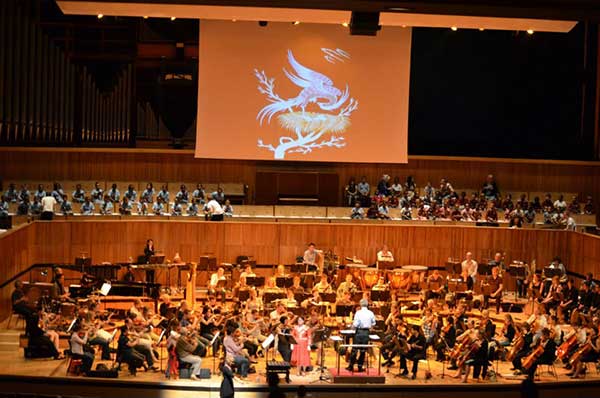
Here with Sally Pomme Clayton, who both wrote the words for the story (based on the Ferdowsi poem) and narrated them with great aplomb!
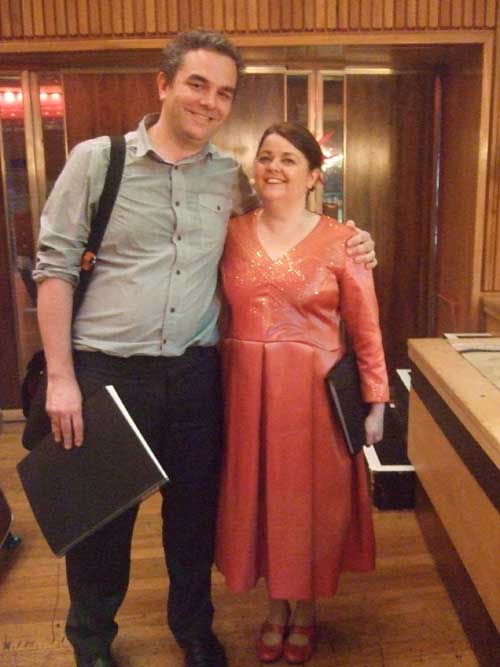
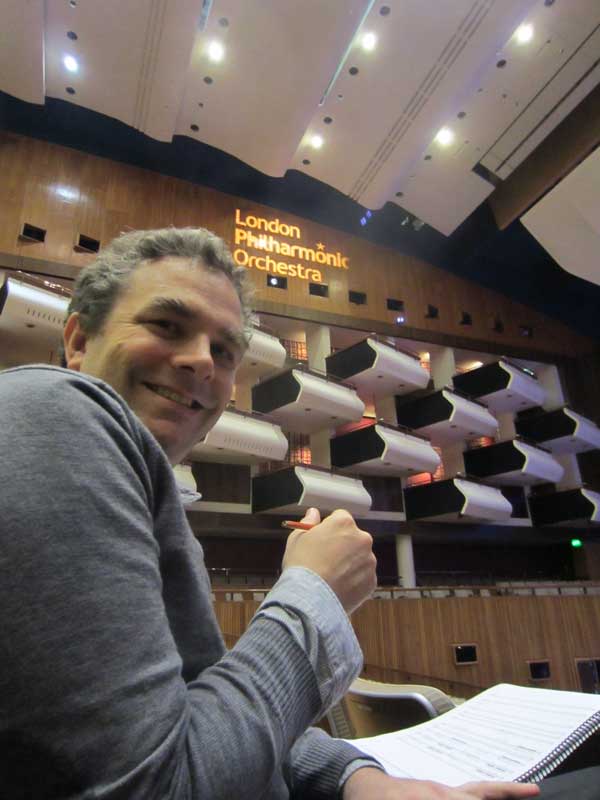
and the fantastic kids from London Music Masters' Bridge Project:
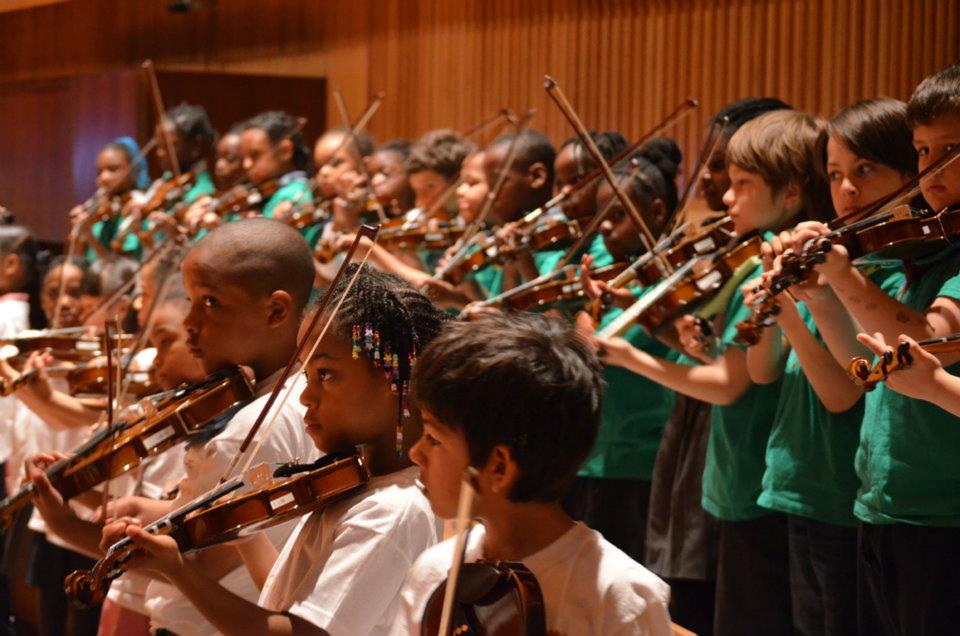
A double dose of marvelous
Posted on Tuesday, May 8, 2012
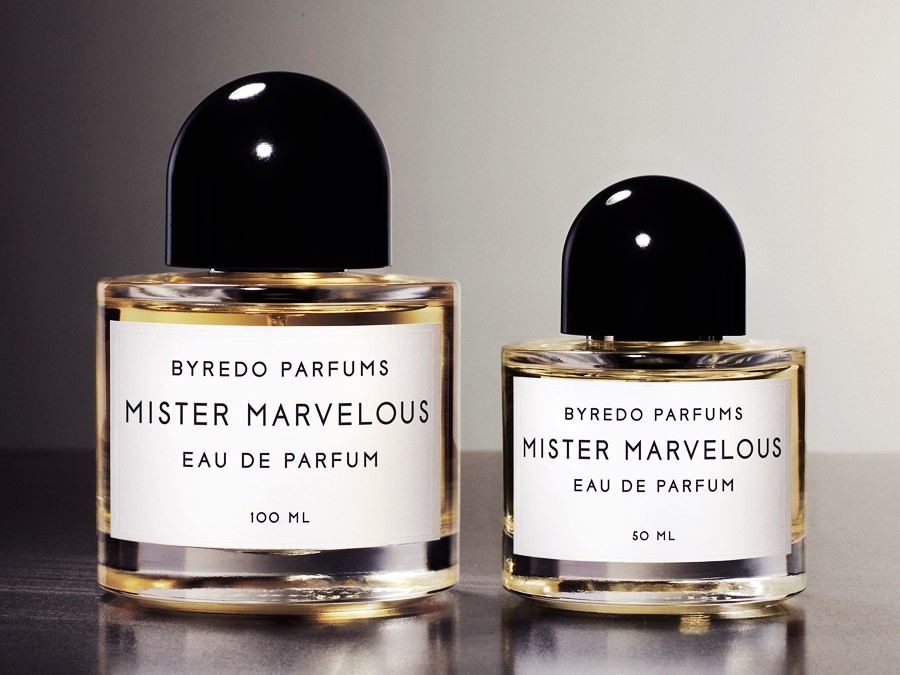
I have two huge premieres in a matter of days later this month. First on 23rd May, the London Philharmonic Orchestra will give two world premiere performances of Prince Zal and the Simorgh to a Festival Hall packed with school kids (if you can imagine any more daunting audience). The piece features a narration, written and presented by the wonderful Sally Pomme Clayton and is based on part of the Iranian epic poem The Shahnameh. You could call it a kind of Iranian Peter and the Wolf. But it's quite a dark and dramatic story, so it will be very "interesting" to see how it goes over.
Equally daunting is the second premiere - my '20x12' Cultural Olympiad commission Fire - at the Salisbury Festival on 26th May. This is daunting because of the logistics of handling a fire artist, and a large chorus singing in a circle (even with two conductors we will be struggling to co-ordinate). But with a large dose of positive thinking, and a drier spell of weather than we've been having recently, I'm sure, in the words of the great English conductor David Parry, all will be MARVELOUS!
The Eye of Night CD release
Posted on Wednesday, March 7, 2012
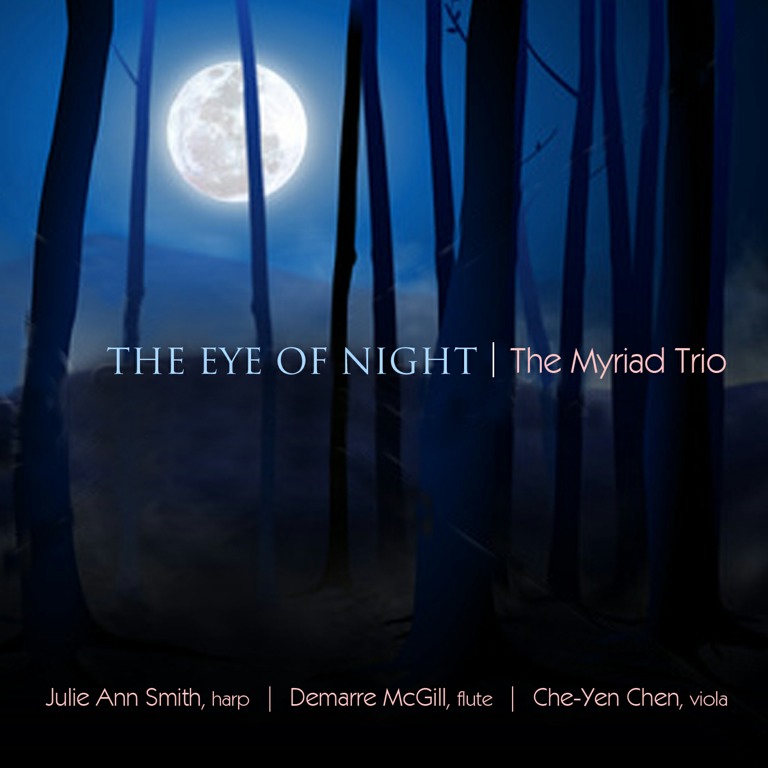
The launch concert for my new CD with the wonderful Myriad Trio, featuring my flute/harp/viola trio The Eye of Night is this Sunday 11 March at Soka University Performing Arts Center, Aliso Viejo, CA. If you're in the area come along for a chance to see these three amazing musicians perform and, I'm guessing, signing copies of the new CD!

